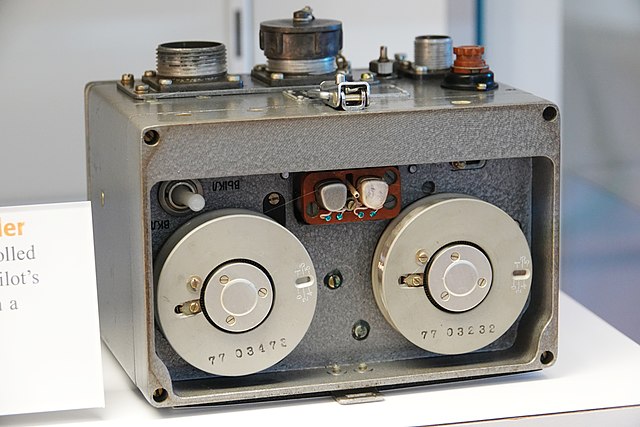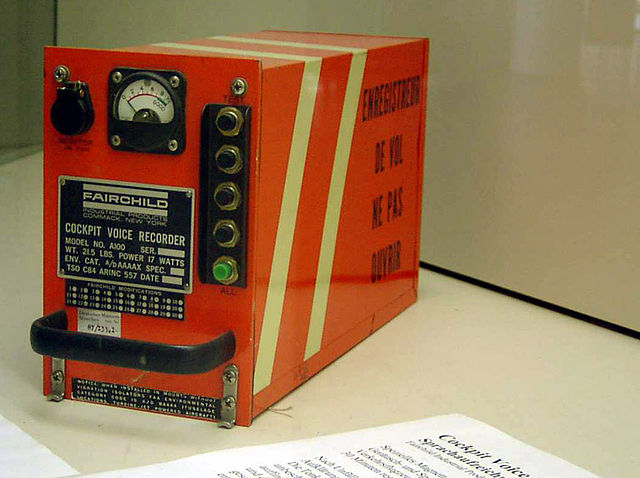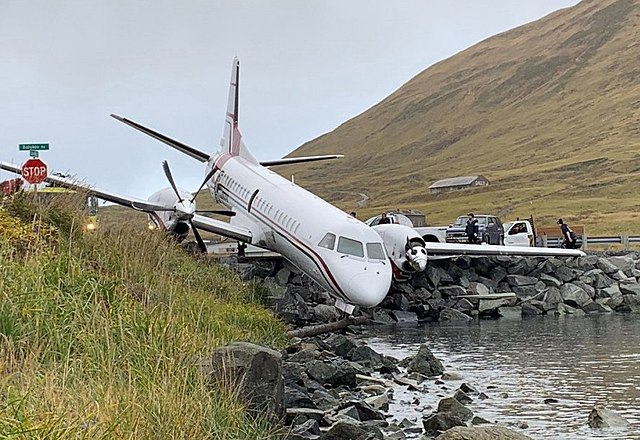A flight recorder is an electronic recording device placed in an aircraft for the purpose of facilitating the investigation of aviation accidents and incidents. The device may often be referred to colloquially as a "black box", an outdated name which has become a misnomer—they are now required to be painted bright orange, to aid in their recovery after accidents.
A modern flight data recorder; the underwater locator beacon is the small cylinder on the far right. (Translation of warning message in French: "Flight recorder do not open".) The warning appears in English on the other side.
Cold War-era Soviet MS-61 cockpit voice recorder from a MiG-21 interceptor
A Fairchild A100 cockpit voice recorder, on display in the Deutsches Museum. This is a magnetic-tape unit built to an old standard, TSO C84, as shown on the nameplate. The text on the side in French says "Flight recorder do not open".
"Mata-Hari" flight data recorder
Aviation accidents and incidents
An aviation accident is defined by the Convention on International Civil Aviation Annex 13 as an occurrence associated with the operation of an aircraft, which takes place from the time any person boards the aircraft with the intention of flight until all such persons have disembarked, and in which (a) a person is fatally or seriously injured, (b) the aircraft sustains significant damage or structural failure, or (c) the aircraft goes missing or becomes completely inaccessible. Annex 13 defines an aviation incident as an occurrence, other than an accident, associated with the operation of an aircraft that affects or could affect the safety of operation.
PenAir Flight 3296 after its landing accident in 2019
Accident Investigation Team from the Civil Aeronautics Board with Director, Bobbie R. Allen - abt. 1965
CAB Supervisor Bobbie R. Allen and FAA Administrator Najeeb Halaby discuss accident details abt. 1963
United Airlines Flight 175 crashes into the South Tower of the World Trade Center.








